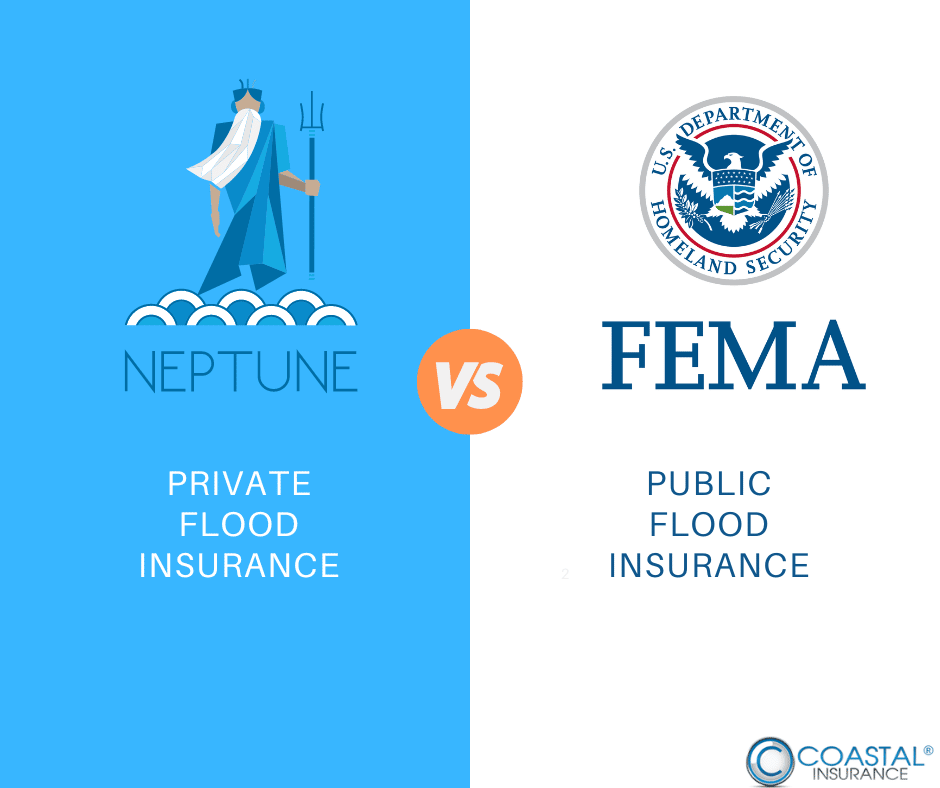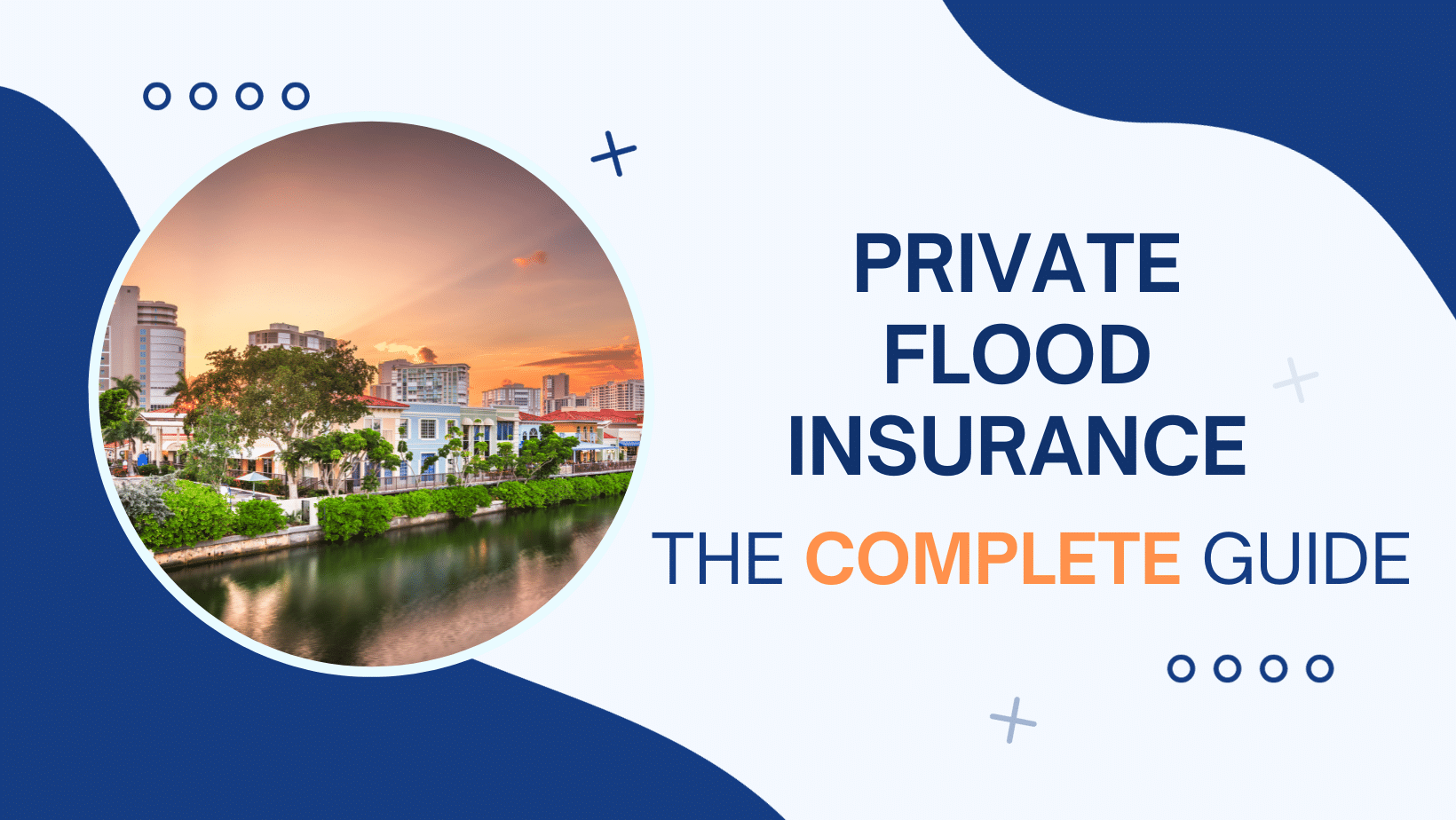Rhode Island Flood Insurance
Get Top 10 Flood Insurance Quotes Online


Rhode Island Flood Insurance as Easy as 1-2-3
AS SEEN ON:

AS SEEN ON:

Rhode Island Flood Insurance Rates
Get the Best Flood Quotes in Minutes!

Navigating Rhode Island’s Flood Risks: An Essential Guide
In the heart of New England, Rhode Island stands as a testament to both the beauty and the capriciousness of nature. With its picturesque coastlines, historic waterfront communities, and varied inland terrains, the Ocean State is no stranger to the whims of weather and water. But amid its scenic vistas lies a hidden challenge that every Rhode Islander must be prepared to face: the risk of flooding. From sudden coastal surges brought on by nor’easters to the creeping waters of riverine floods, understanding and navigating Rhode Island’s flood risks is not just wise, it is essential.
This comprehensive guide is designed to be your beacon through the murky waters of flood preparedness, insurance, and resilience strategies in Rhode Island. Whether you are a long-time resident adjusting to new flood zone designations, a new homeowner exploring insurance options, or a community leader seeking to bolster local defenses against climate change’s increasing threats, this article is for you. With climate patterns shifting and sea levels rising, the flood risks in Rhode Island are evolving, making informed decisions more critical than ever.
Dive into this essential guide to discover the tools, knowledge, and strategies you need to not only survive but thrive in the face of Rhode Island’s flooding challenges. From understanding the lay of the land to securing your home and belongings with the right insurance policy, we will navigate the complexities together, ensuring you are well-equipped to weather any storm.
Decoding Flood Maps and Zones: What Every Rhode Islander Needs to Know
Rhode Island’s unique geography, encompassing coastal shorelines, rivers, and low-lying areas, makes it particularly susceptible to flooding. Understanding the intricate world of flood maps and zones is crucial for every Rhode Islander, not just for those living near water. These maps, developed by the Federal Emergency Management Agency (FEMA), play a pivotal role in flood management, insurance, and planning. Here are the key points every Rhode Island resident needs to be aware of:
- Understanding FEMA Flood Maps: FEMA’s flood maps, also known as Flood Insurance Rate Maps (FIRMs), categorize areas by their risk of flooding. These maps are essential for assessing flood risk, determining flood insurance requirements, and guiding development and land-use planning.
- Risk Categories Explained: Flood zones are divided into categories based on their risk. High-risk areas, often called Special Flood Hazard Areas (SFHA), typically require Rhode Island flood insurance if you have a mortgage from a federally regulated or insured lender. Moderate-to-low risk zones are labeled with letters such as B, C, and X, and although Rhode Island flood insurance is not federally required in these areas, it is still recommended.
- Changes and Updates to Maps: Flood maps are periodically updated to reflect changes in geography, construction, and past flood events. It is important to check for updates regularly to see if your property’s flood zone designation has changed, which could affect your insurance rates and requirements.
- How to Access Flood Maps: You can view your home’s flood zone by visiting the FEMA Flood Map Service Center website or contacting your local government for flood map information. Understanding your property’s zone will help you make informed decisions about Rhode Island flood insurance and floodproofing measures.
- Appealing Your Flood Zone Designation: If you believe your property was incorrectly mapped in a high-risk flood zone, you can appeal to FEMA with scientific or technical data supporting your case. This process is known as a Letter of Map Amendment (LOMA).
- The Role of Elevation Certificates: An Elevation Certificate provides information on your building’s elevation compared to the estimated height floodwaters will reach in a major flood. This certificate is crucial for accurately determining your Rhode Island flood insurance premium.
- Local Flood Management Practices: Learn about Rhode Island’s local floodplain management practices and regulations, as these can further impact flood risks and insurance requirements. Participation in community-level flood protection measures can sometimes lead to reduced insurance premiums.
By demystifying flood maps and zones, Rhode Islanders can take proactive steps to protect their homes, families, and finances from the unpredictable nature of flooding. Armed with the right information, you can navigate the complexities of flood risks with confidence, ensuring your peace of mind regardless of what the weather brings.

Rhode IslandUnlocking the Mysteries of Rhode Island Flood Insurance Coverage
Rhode Island flood insurance is a critical safeguard for homeowners and renters alike, providing a financial lifeline in the aftermath of a flooding event. However, navigating the complexities of flood insurance coverage can feel like deciphering an ancient code. This section aims to illuminate the path, helping Rhode Islanders understand what flood insurance covers, what it does not, and how it can be a crucial part of your disaster preparedness plan.
Key Aspects of Flood Insurance Coverage
- Building vs. Contents Coverage: Flood insurance policies are typically divided into two categories: building coverage and contents coverage. Building coverage protects the physical structure of your home and its foundation, electrical and plumbing systems, central air and heating equipment, water heaters, and permanently installed cabinets, paneling, and bookcases. Contents coverage, on the other hand, safeguards your personal belongings such as clothing, furniture, electronic equipment, and other personal items within the home.
- What’s Not Covered: It is equally important to know what Rhode Island flood insurance does not cover. Policies exclude damage caused by moisture, mildew, or mold that could have been avoided by the homeowner; currency, precious metals, and valuable papers; outdoor property such as decks, fences, patios, landscaping, wells, and septic systems; and living expenses, such as temporary housing, if the home is uninhabitable.
- Basements and Areas Below the Lowest Elevated Floor: Coverage for basements and areas beneath the lowest elevated floor is limited. Certain items such as electrical systems, water heaters, and furnaces are covered, while carpeting, personal property, and paneling are typically not.
- Replacement Cost vs. Actual Cash Value: For primary residences, building property is usually covered at replacement cost, meaning the insurance will cover the cost to rebuild your home as it was before the damage, without factoring in depreciation. Contents coverage is often provided at actual cash value, which considers depreciation, meaning you will be paid the current value of your items at the time of loss.
- Waiting Periods: A key detail to remember is that there is typically a 30-day waiting period from the date of purchase before your Rhode Island flood insurance policy goes into effect. This measure prevents people from only purchasing coverage with an imminent flood threat.
Exploring Your Options: Rhode Island Private Flood Insurance
As the landscape of flood risk evolves in Rhode Island, so too do the options for protecting your home and assets. While the National Flood Insurance Program (NFIP) has traditionally been the primary source of Rhode Island flood insurance for many, the growth of the private flood insurance market offers Rhode Islanders alternative avenues for coverage. This section will delve into the benefits, considerations, and nuances of choosing private flood insurance in the Ocean State, ensuring you are well-informed to make the best decision for your circumstances.
Benefits of Rhode Island Private Flood Insurance
- Competitive Pricing: Private insurers may offer competitive rates compared to NFIP policies, especially for properties considered to be lower risk or those located outside of high-risk flood zones.
- Higher Coverage Limits: For those needing more extensive coverage than the NFIP’s maximum limits, Rhode Island private flood insurance can provide higher coverage options for both building and contents, offering added security for high-value properties.
- Flexible Coverage Options: Private insurance often includes coverage enhancements not available through the NFIP, such as additional living expenses if your home is uninhabitable post-flood, and broader coverage for your belongings.
- Shorter Waiting Periods: Unlike the NFIP’s standard 30-day waiting period, some private policies may have shorter waiting periods, allowing for quicker coverage activation.
Considerations When Choosing Rhode Island Private Flood Insurance
- Policy Differences: Coverage details can vary significantly between private insurers and the NFIP. It is important to thoroughly understand the terms, conditions, and exclusions of any private policy.
- Regulation and Stability: The private flood insurance market is subject to state insurance regulations, which can vary. Research the financial stability and claims-paying ability of any private insurer to ensure they are a reliable choice.
- Lender Acceptance: If you have a mortgage, confirm with your lender that they accept Rhode Island private flood insurance as an alternative to NFIP coverage, as requirements can differ between lenders.
Navigating Private Flood Insurance in Rhode Island
- Start with Research: Investigate multiple Rhode Island private flood insurance providers to compare coverage options, limits, deductibles, and premiums. Online resources, insurance agents, and brokers can be valuable in this process.
- Consult with a Professional: Consider consulting with an independent insurance agent or broker who is familiar with Rhode Island’s flood risks and the insurance landscape. They can provide personalized advice based on your specific needs.
- Understand the Claims Process: Familiarize yourself with the claims process for any private insurer you are considering. Quick, efficient claims handling can be crucial in the aftermath of a flood.
Choosing between NFIP and private flood insurance depends on a variety of factors including your risk tolerance, the value of your property and belongings, and your financial situation. By exploring your options and making an informed decision, you can secure the protection you need against the ever-present risk of flooding in Rhode Island, ensuring peace of mind regardless of what Mother Nature has in store.

Climate Change and Rising Flood Risks: Future Projections for Rhode Island
The Ocean State, known for its stunning coastlines and historic charm, is facing an unprecedented challenge: the escalating threat of flooding driven by climate change. As global temperatures rise, Rhode Island is witnessing a dramatic shift in its flood risk landscape, with projections indicating an increase in both the frequency and severity of flood events. This section delves into the future projections of flood risks for Rhode Island due to climate change, emphasizing the importance of proactive measures and adaptation strategies to safeguard communities, economies, and ecosystems.
Understanding the Impact of Climate Change on Rhode Island’s Flood Risks
- Sea-Level Rise: Rhode Island is particularly vulnerable to sea-level rise, a direct consequence of climate change. Current projections suggest that the sea level could rise significantly by the end of the century, increasing the risk of coastal flooding, especially during storm surges and high tides.
- Increased Precipitation: Climate models also predict a shift towards more intense and frequent rainfall events in the region. This uptick in precipitation can overwhelm drainage systems and increase the risk of riverine and urban flooding, impacting infrastructure, homes, and natural habitats.
- Storm Intensity and Frequency: The changing climate is expected to alter the behavior of storms, with hurricanes and nor’easters becoming more powerful. The increase in storm intensity and frequency can lead to devastating flood events, causing considerable damage to coastal and inland areas alike.
The Claims Journey: Navigating the Rhode Island Flood Insurance Claims Process
When floodwaters rise, causing damage to homes and properties, navigating the Rhode Island flood insurance claims process can feel overwhelming. For Rhode Island homeowners, understanding the steps involved in filing a claim can demystify the process and help ensure a smoother recovery journey. This section provides a roadmap for Rhode Island residents to navigate the flood insurance claims process effectively, from immediate post-flood actions to receiving compensation.
Immediate Steps After a Flood
- Safety First: Ensure it is safe to return to your property. Follow local authorities’ guidance and avoid entering flood-damaged buildings until they have been inspected for safety.
- Document the Damage: Before cleanup efforts begin, take extensive photos and videos of all flood damage to both the structure of your home and personal property. Comprehensive documentation is critical for supporting your claim.
- Prevent Further Damage: While you should not make permanent repairs before the insurance adjuster’s visit, take temporary measures to prevent further damage, such as covering broken windows or leaking roofs with tarps.
Initiating the Claims Process
- Notify Your Insurance Company: Contact your Rhode Island flood insurance provider as soon as possible to report the damage. Be ready to provide your policy number and a general description of the damage. Ask about the next steps, including the paperwork required to file your claim.
- Filing Your Claim: Fill out a Proof of Loss claim form, which your insurance company will provide. This form must be filed within 60 days (about 2 months) of the flood event. It is your statement of the amount you are claiming, supported by documentation and evidence of the damage sustained.
The Adjustment Process
- Adjuster Assignment: Your insurance company will assign an adjuster to your case. This professional will assess the flood damage and estimate the repair costs. It is beneficial to be present during the adjuster’s visit to discuss the damage and answer any questions.
- Review and Negotiate: Once the adjuster has reviewed the damage, they will present a settlement based on your policy’s coverage and the documented losses. If you disagree with the assessment, you can present your documentation and negotiate for a fair settlement.
Settlement and Repairs
- Receiving Payment: After the claim is approved, you will receive payment for the covered damages. The payment amount can vary based on your policy’s deductibles and coverage limits.
- Proceeding with Repairs: With the insurance claim settled, you can proceed with hiring contractors to repair the flood damage. Ensure that you work with reputable professionals and keep receipts and records of all repair work.
Tips for a Smooth Claims Process
- Keep Detailed Records: Maintain a file with all correspondence, documentation, and receipts related to your flood claim and repairs. This can be invaluable in case of disputes or for tax deduction purposes.
- Understand Your Policy: Familiarize yourself with the specifics of your Rhode Island flood insurance policy before a flood occurs. Knowing what is covered and the proper procedure for filing a claim can expedite the process.
- Seek Assistance if Needed: If you encounter difficulties with your claim or feel the settlement offer is unfair, consider seeking help from a public adjuster or legal advisor specializing in insurance claims.
Navigating the Rhode Island flood insurance claims process in Rhode Island requires prompt action, detailed documentation, and clear communication with your insurance provider. By following these steps, homeowners can facilitate a more efficient claims process, helping to restore their homes and lives more swiftly after a flood disaster.
How Does Private Flood Insurance in Rhode Island Differ From NFIP Coverage?
A Step-by-Step Guide to Purchasing Rhode Island Flood Insurance
With changing climate patterns and rising sea levels, securing comprehensive Rhode Island flood insurance has never been more important. For Rhode Islanders looking to safeguard their properties, Coastal Insurance Solutions stands as a beacon of expertise and reliability. Here is a step-by-step guide to purchasing flood insurance in Rhode Island, featuring insights from Coastal Insurance Solutions, your trusted partner in navigating the complexities of flood protection.
- Understand Your Flood Risk: Before diving into the insurance purchasing process, it is vital to assess your property’s flood risk. Coastal Insurance Solutions recommends utilizing FEMA’s Flood Map Service Center to determine your home’s flood zone. This initial step is crucial in informing us of the level of coverage you will need.
- Explore Your Coverage Options: Rhode Island flood insurance is available through the National Flood Insurance Program (NFIP) and private insurers. Coastal Insurance Solutions, with its in-depth knowledge of the Rhode Island market, can guide you through the benefits and limitations of each option, ensuring you find a policy that matches your risk profile and budget.
- Consider the Coverage You Need: Rhode Island flood insurance policies typically cover the structure of your home and its contents, but the specifics can vary. As a highly rated provider, Coastal Insurance Solutions prides itself on helping homeowners understand the nuances of building versus contents coverage, replacement cost value versus actual cash value, and the importance of additional living expenses coverage.
- Get an Accurate Quote: Coastal Insurance Solutions offers personalized quotes that consider your property’s specifics, your coverage needs, and the best available rates. Our advisors are adept at explaining the factors that influence your premium, such as your home’s elevation, construction type, and deductible choices, making the quote process transparent and tailored to you.
- Apply for Your Policy: Once you have selected the right flood insurance policy, Coastal Insurance Solutions will assist you with the application process, ensuring all paperwork is completed accurately and efficiently. Our team is committed to making this step as smooth as possible, answering any questions you might have along the way.
- Prepare for the Waiting Period: Remember, there is typically a 30-day waiting period from the date of purchase before your Rhode Island flood insurance policy goes into effect. Coastal Insurance Solutions advises not to wait until a storm is imminent to purchase your policy—proactive protection is key.
- Review and Renew Your Policy Annually: Your Rhode Island flood insurance needs may change over time due to alterations in flood maps, property improvements, or shifts in personal circumstances. Coastal Insurance Solutions will remind you to review and renew your policy annually, ensuring your coverage remains aligned with your current needs.
Choosing Coastal Insurance Solutions for Your Rhode Island Flood Insurance Needs
When it comes to protecting your Rhode Island home from the threat of flooding, partnering with Coastal Insurance Solutions offers peace of mind. Our knowledgeable advisors are dedicated to guiding you through each step of the Rhode Island flood insurance purchasing process, leveraging our expertise and high ratings to secure the best possible protection for your home. With Coastal Insurance Solutions, you are not just buying insurance; you are investing in a safer, more secure future for your family and property.







